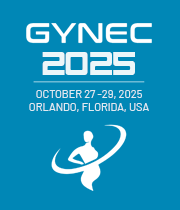Title : Transvesical cesarean section in a virgin abdomen: A rare case report
Abstract:
Iatrogenic injuries to the bladder are a recognized and rare complication of gynecological and obstetric surgeries, stemming from the close anatomical relationship between the female internal genitalia and urinary tract organs. Injuries to the urinary tract and bladder can manifest during surgical procedures involving the abdominal and/or pelvic cavities, encompassing gynecological, general, and urological surgeries. Hysterectomy and cesarean section (CS) stand as the foremost and second most prevalent causes, respectively. This is due to the substantial frequency of these procedures. [1, 2] While bladder injury during CS is relatively uncommon, it does occur and has reported incidences ranging from 0.016% to 0.94%. [3, 4] Various factors have been identified as risks forbladder injury during CS, including the presence of adhesions, repeated CS procedures, urgent CS, and attempts at vaginal birth after previous CS.
We are presenting a 21 year old female presented with bleeding per vagina. On examination present pregnancy appears 30-32 weeks, 3-4 cm cervical opening , 30-40 % effacement, bleeding per vagina, placenta felt through OSand no fetal heart sound on auscultation. USG shows breech presentation with low lying placenta upto OS with no fetal heart sound suggesting of IUD of 30 weeks and 5 days.Patient diagnosed as placenta previa with antepartum hemorrhage.Pt had history of previous single normal vaginal delivery at term.Emergency cesarean section was planned. Pt was catheterised. LSCS was done and fetus delivered as breech and did not cry. Further examination after delivery of baby it was found that bladder was injured through anterior and posterior part and baby was delivered through bladder. Urology call was send and in between placenta was separated and hemostasis achieved and uterus was closed. Urologist joined the case and examine the injured bladder and it was found that approx 7-8 cm transverse defect in anterior and posterior wall of Urinary bladder which was away from bilateral VUJ and trigone. Bladder was repaired in 3 layers. Mucosa was closed with vicryl 3-0 , while submucosa and muscle layer with vicryl 2-0.First posterior wall was repaired; muscle and submucosa extravesically and mucosa layer intravesically. Anterior wall was closed later; firstly mucosa layer followed by submucosa and muscle layer. After bladder closure , anastomosis was checked by retrograde filling of bladder with normal saline from foley catheter. Extravesical drain was placed and abdominal wound was closed in layer. Extravesical drain was removed on post op day 3 and patient was discharged on day 5 and advised to keep foley catheter for 3 weeks. Post op period was uneventful. Patient follow up for 3 months and there was no complications.
We want to discuss the causes , preventive aspects as well as management of this in detail.



